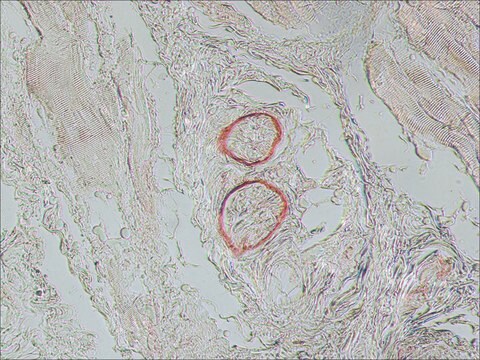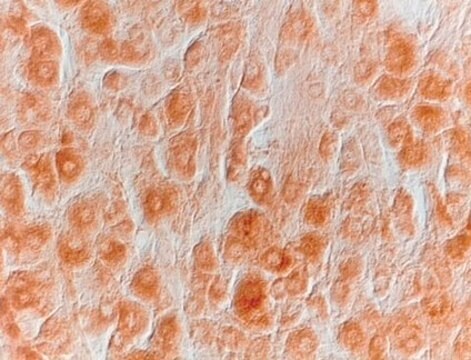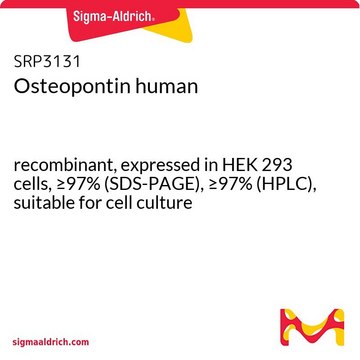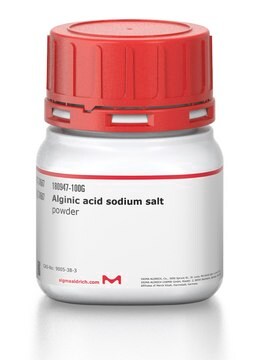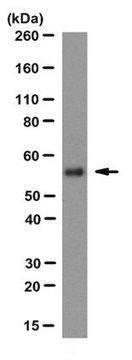MABN2322
Anti-Nerve Growth Factor Antibody, clone α D11
Synonim(y):
NGF;beta-NGF
About This Item
Polecane produkty
pochodzenie biologiczne
rat
Poziom jakości
białko sprzężone
unconjugated
forma przeciwciała
purified antibody
rodzaj przeciwciała
primary antibodies
klon
α D11, monoclonal
masa cząsteczkowa
calculated mol wt 27.088 kDa
oczyszczone przez
using protein G
reaktywność gatunkowa
chicken, human, mouse
opakowanie
antibody small pack of 100 μg
metody
ELISA: suitable
izotyp
IgG2a
sekwencja epitopowa
N-terminal half
numer dostępu Protein ID
numer dostępu UniProt
Warunki transportu
dry ice
docelowa modyfikacja potranslacyjna
unmodified
informacje o genach
mouse ... Ngf(18049)
Opis ogólny
Specyficzność
Immunogen
Zastosowanie
Evaluated by ELISA with recombinant mouse Nerve growth factor.
ELISA Analysis (ELISA): A representative lot of this antibody detected various dilution of recombinant mouse Nerve growth factor.
Tested applications
Surface plasmon resonance: A representative lot detected Nerve Growth Factor in Surface plasmon resonance applications (Covaceuszach, S., et al. (2012). PLoS One. 7(3):e32212).
ELISA Analysis: A representative lot detected Nerve Growth Factor in ELISA applications (Cattaneo, A., et al. (1988). J. Neurochem. 50(4):1003-10; Covaceuszach, S., et al. (2012). PLoS One. 7(3):e32212).
Inhibition Assay: A representative lot competitively inhibited the biological activity of mNGF and prevented the binding of NGF to PC12 cells. (Cattaneo, A., et al. (1988). J. Neurochem. 50(4):1003-10).
Radioimmunoassay: A representative lot detected Nerve growth factor in Radioimmunoassay applications (Cattaneo, A., et al. (1988). J. Neurochem. 50(4):1003-10).
Note: Actual optimal working dilutions must be determined by end user as specimens, and experimental conditions may vary with the end user
Postać fizyczna
Przechowywanie i stabilność
Inne uwagi
Oświadczenie o zrzeczeniu się odpowiedzialności
Nie możesz znaleźć właściwego produktu?
Wypróbuj nasz Narzędzie selektora produktów.
Kod klasy składowania
12 - Non Combustible Liquids
Klasa zagrożenia wodnego (WGK)
WGK 2
Temperatura zapłonu (°F)
Not applicable
Temperatura zapłonu (°C)
Not applicable
Certyfikaty analizy (CoA)
Poszukaj Certyfikaty analizy (CoA), wpisując numer partii/serii produktów. Numery serii i partii można znaleźć na etykiecie produktu po słowach „seria” lub „partia”.
Masz już ten produkt?
Dokumenty związane z niedawno zakupionymi produktami zostały zamieszczone w Bibliotece dokumentów.
Nasz zespół naukowców ma doświadczenie we wszystkich obszarach badań, w tym w naukach przyrodniczych, materiałoznawstwie, syntezie chemicznej, chromatografii, analityce i wielu innych dziedzinach.
Skontaktuj się z zespołem ds. pomocy technicznej